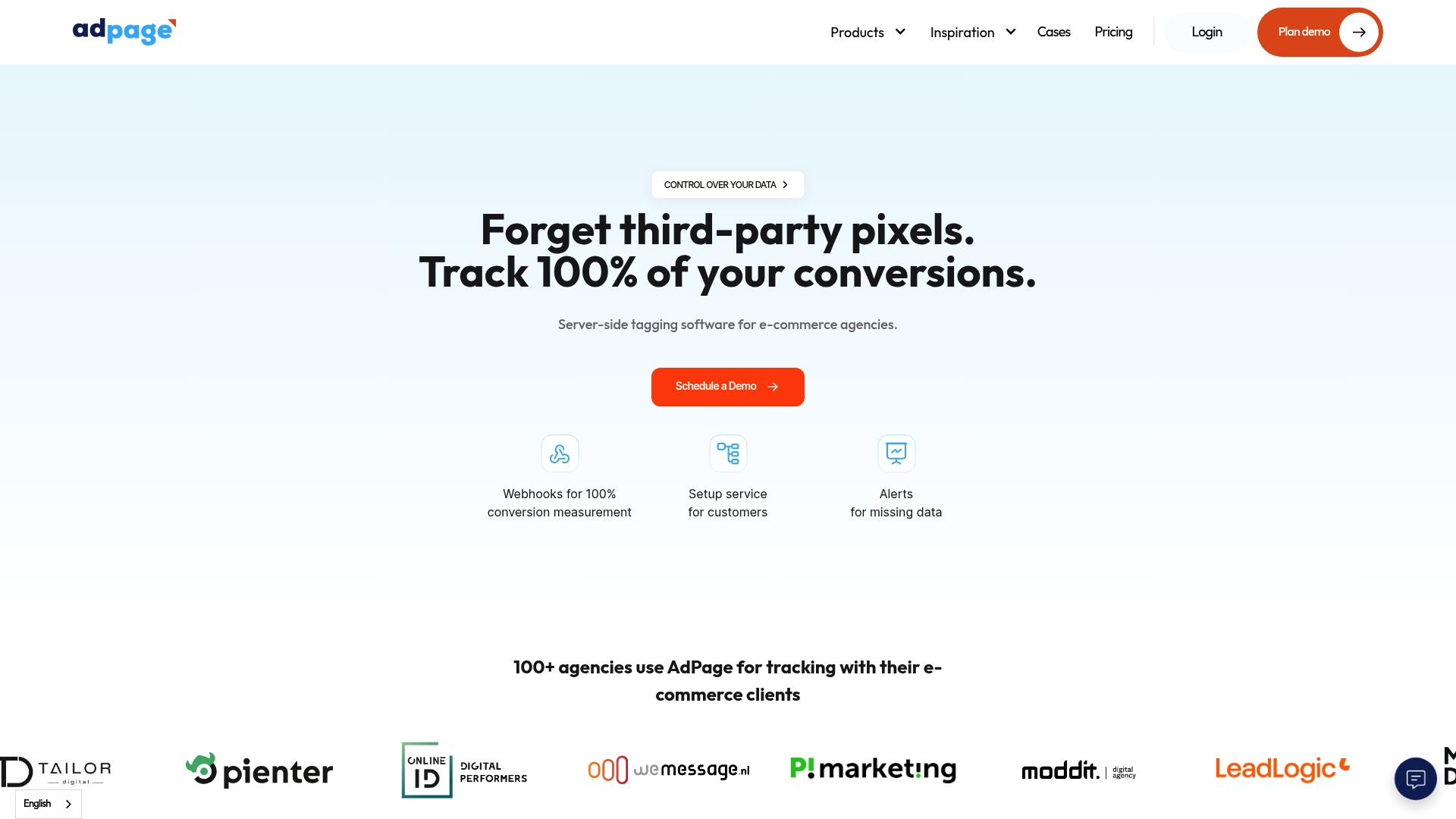Marketers are obsessed with understanding online behaviour and web tracking promises a window into what people do on nearly every site. Most visitors do not realise that web tracking technologies contribute about 11 megatons of greenhouse gas emissions every year, which rivals the annual carbon footprint of some small countries. Suddenly, peeking at what users click is not just about analytics and privacy, there is an impact on the environment too.
Table of Contents
- Understanding What Is Web Tracking
- How Web Tracking Works On Websites
- Benefits And Risks For Online Businesses
- Best Practices For Ethical And Effective Web Tracking
Quick Summary
| Takeaway | Explanation |
|---|---|
| Understand how web tracking works | Web tracking uses cookies and pixels to capture user interactions online. |
| Prioritise user consent and transparency | Clear privacy notices and opt-out options foster trust and comply with regulations. |
| Utilise data minimisation practices | Collect only essential data to maintain user privacy and avoid unnecessary risks. |
| Leverage insights for personalised marketing | Detailed user profiles can enhance targeting and improve conversion rates effectively. |
| Be aware of privacy implications | Ethical web tracking balances data insights with user privacy and environmental impact concerns. |
Understanding What is Web Tracking
Web tracking represents a sophisticated digital mechanism through which websites gather, analyse, and leverage user interaction data across online platforms. At its core, web tracking enables businesses to understand user behaviour, preferences, and engagement patterns with unprecedented precision.
The Fundamental Mechanics of Web Tracking
Web tracking operates through multiple technological approaches designed to capture user interactions. Learn more about tracking optimization reveals that these mechanisms range from basic cookie technologies to advanced server-side tracking methods. Websites deploy various tools to monitor and record user activities such as page views, click patterns, time spent on specific sections, and navigation trajectories.
According to research from Wikipedia, web tracking encompasses several key techniques:
![]()
- Cookies: Small text files stored on user devices that record browsing history
- Browser Fingerprinting: Collecting unique device and browser configuration details
- Session Tracking: Monitoring user interactions during a single website visit
Below is a summary table outlining the main types of web tracking technologies described in the article, along with their purposes and examples of data collected:
| Technology | Purpose | Example Data Collected |
|---|---|---|
| Cookies | Store user preferences and track activity | Browsing history, login status |
| Browser Fingerprinting | Identify unique devices and configurations | Device type, browser settings |
| Session Tracking | Monitor user actions during a single visit | Page views, click patterns |
| Tracking Pixels | Capture interaction data via invisible images | Page loads, engagement events |
| Local Storage | Retain data across web sessions | User IDs, form input |
This table helps clarify the different tracking methods and what information each typically gathers.
Technological Approaches and Data Collection
Modern web tracking transcends simple data collection. It involves complex algorithmic processes that transform raw user interaction data into actionable insights. Tracking technologies enable marketers to construct detailed user personas, predict consumer behaviour, and personalise digital experiences.
The Australian eSafety Guide highlights that web tracking involves sophisticated data aggregation techniques. These methods allow businesses to understand user preferences, predict future interactions, and create highly targeted marketing strategies.
By mapping user journeys across multiple digital touchpoints, web tracking provides organisations with comprehensive insights into consumer behaviour. This data helps businesses refine their digital strategies, improve user experiences, and optimize conversion rates. Understanding these intricate tracking mechanisms empowers marketers to develop more nuanced, data-driven approaches to digital engagement.
How Web Tracking Works on Websites
Web tracking functions through a complex network of digital technologies that capture, record, and analyse user interactions across websites. These sophisticated mechanisms enable businesses to gain deep insights into user behaviour, preferences, and engagement patterns.
Technical Infrastructure of Web Tracking
The technical infrastructure of web tracking relies on multiple interconnected technologies. Learn more about tracking method selection reveals that websites employ various tools to monitor and document user activities comprehensively.
According to the New York State Attorney General’s guide, web tracking primarily operates through several key mechanisms:
- Tracking Pixels: Tiny, invisible images embedded in web pages that transmit user interaction data
- HTTP Cookies: Small data files stored on user devices to track browsing history and preferences
- Local Storage: Browser-based storage mechanisms that retain user data between sessions
Data Collection and Processing Techniques
Web tracking technologies capture a wide range of user interactions. These include page views, mouse movements, scroll depth, time spent on specific sections, clicked links, and even device-specific information like screen resolution and browser type. Advanced tracking systems can reconstruct detailed user journeys across multiple websites and platforms.
The processing of tracked data involves complex algorithmic analysis. Websites and third-party analytics platforms use machine learning and statistical models to transform raw interaction data into meaningful insights. This enables businesses to create detailed user profiles, predict consumer behaviour, and develop highly targeted marketing strategies.
By continuously monitoring and analysing user interactions, web tracking provides organisations with a granular understanding of digital user experiences. These insights help businesses optimize website design, improve user interfaces, and create more personalised digital interactions that resonate with their target audience.
Benefits and Risks for Online Businesses
Web tracking presents a complex landscape of opportunities and challenges for online businesses, offering powerful insights while simultaneously raising significant privacy and ethical considerations. Understanding this delicate balance is crucial for organisations seeking to leverage digital analytics effectively and responsibly.
Here is a summary table highlighting the key benefits and ethical risks of web tracking for online businesses, as discussed in the article:
| Benefit or Risk | Description |
|---|---|
| Enhanced User Profiling | Builds detailed customer personas and insights |
| Conversion Rate Optimization | Improves digital strategies to increase conversions |
| Personalised Marketing | Enables targeted content and recommendations |
| Privacy Concerns | Requires transparency and user consent to address sensitivities |
| Environmental Impact | Generates about 11 megatons of greenhouse gases annually |
| Legal and Trust Considerations | Necessitates compliance and fosters consumer trust |
This table offers a quick reference to help brands and marketers weigh the advantages and challenges of web tracking.
Strategic Business Advantages
Web tracking provides businesses with unprecedented opportunities to understand and engage with their target audiences. Learn more about tracking optimization reveals that sophisticated tracking technologies enable companies to develop highly personalised marketing strategies, improve user experiences, and drive more targeted conversions.
According to research from the Future Internet journal, businesses can benefit from web tracking through:
- Enhanced User Profiling: Creating detailed customer personas
- Conversion Rate Optimization: Understanding user behaviour patterns
- Personalised Marketing: Delivering targeted content and recommendations
Privacy and Ethical Considerations
While web tracking offers significant business advantages, it simultaneously presents complex privacy challenges. The New York State Attorney General’s guide emphasizes the critical importance of transparent data collection practices and user consent.
Interestingly, research on carbon emissions highlights an unexpected environmental dimension to web tracking. The study reveals that extensive tracking technologies contribute approximately 11 megatons of greenhouse gases annually, adding an ecological consideration to the privacy debate.
Businesses must navigate these challenges by implementing robust data protection mechanisms, obtaining explicit user consent, and maintaining transparent communication about their tracking practices. This approach not only mitigates legal risks but also builds trust with increasingly privacy-conscious consumers. By balancing technological capabilities with ethical considerations, organisations can develop tracking strategies that respect user privacy while delivering valuable insights and personalised experiences.
Best Practices for Ethical and Effective Web Tracking
Ethical web tracking requires a delicate balance between gathering valuable user insights and respecting individual privacy rights. Organisations must develop sophisticated strategies that prioritise transparency, user consent, and responsible data management.
Transparency and User Consent
Learn more about tracking method selection emphasizes the critical importance of clear communication with users about data collection practices. According to the World Wide Web Consortium’s ethical web principles, businesses should implement comprehensive consent mechanisms that allow users to understand and control their data.
Key principles of ethical web tracking include:

- Clear Privacy Notices: Providing concise, easily understandable information about data collection
- Granular Consent Options: Allowing users to select specific tracking preferences
- Easy Opt-Out Mechanisms: Enabling simple withdrawal of tracking permissions
Data Protection and Minimisation
The Brooklyn College Library’s digital safety guidelines highlight the significance of data minimisation. Businesses should collect only essential information required for specific purposes, avoiding unnecessary data accumulation.
Research on privacy notices suggests that salient and concise communication can significantly improve user understanding and trust. This approach involves:
- Collecting only relevant data
- Implementing robust security protocols
- Regularly auditing data collection practices
- Ensuring data is anonymised and securely stored
By adopting these ethical tracking practices, organisations can build trust, comply with evolving privacy regulations, and maintain a positive relationship with their user base. The goal is to create a tracking ecosystem that respects user autonomy while delivering valuable business insights.
Frequently Asked Questions
What is web tracking and how does it work?
Web tracking refers to the technologies and methods that websites use to collect data on user interactions across online platforms. It employs methods such as cookies, tracking pixels, and session tracking to monitor activities like page views, clicks, and navigation patterns.
What are the main benefits of web tracking for marketers?
Web tracking provides marketers with valuable insights into user behaviour, allowing for enhanced user profiling, targeted marketing, and optimisation of conversion rates. It helps businesses tailor their digital strategies to meet the specific needs and preferences of their audience.
Are there any privacy concerns associated with web tracking?
Yes, web tracking raises significant privacy and ethical considerations. Users may be unaware of the extent of data collection, which necessitates transparency and consent from businesses to ensure compliance with privacy regulations and build consumer trust.
What best practices should businesses follow for ethical web tracking?
Businesses should prioritise transparency by providing clear privacy notices, offering granular consent options, and ensuring easy opt-out mechanisms. Additionally, they should implement data protection measures and collect only essential information to respect user privacy.
Stop Missing Conversions: Take Control With Accurate Web Tracking
Are you struggling with incomplete data and worried about the privacy and environmental challenges of web tracking, as discussed in our article? Many marketers face the frustration of unreliable conversion tracking, lost insights due to browser restrictions, and uncertainty about data privacy compliance. Outdated methods such as client-side cookies can lead to hidden data gaps and can threaten both your marketing strategy and your users’ trust.
With AdPage, you can tackle these problems head-on. Our server-side tagging is designed to ensure you capture every conversion. You get clear consent management and accurate user data collection, so your campaigns become both effective and fully compliant with modern data laws. Seamlessly integrate with platforms like Shopify, WooCommerce, or Magento and enjoy easy onboarding with support every step of the way.

Imagine gaining 100 percent visibility on your conversions while protecting your users’ privacy. Do not let data loss and missed opportunities slow your growth. Take the next step today to propel your tracking into the future. Visit our main website to discover how our solutions transform your analytics and empower your business to make smarter, greener choices.



.png)
